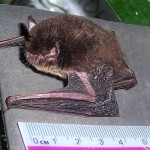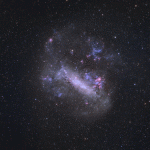
Microbats are small insect eating mammals. Image: Tracy Lee Photography
Urbanisation could contribute to the demise of microbats, one of nature’s forgotten superheros.
Microbats could be deemed as nature’s forgotten superheros. The tiny creatures can eat half their body weight in one night, protecting us from nasty mosquitoes and shielding some of our crops. But urbanisation has had dramatic consequences for the species. Housing and vegetation clearing has reduced its feeding and roosting grounds, which might contribute to the eventual demise of some microbat species such as Gould’s wattled bat (Chalinolobus gouldii).
“Bats have two main requirements, foraging and roosting habitat. We have identified good foraging habitat in Sydney, however, land managers should also conserve roosting habitat to help microbat populations,” says Caragh Threlfall, research fellow at the University of Melbourne.
Urban development has had an impact on other species as well. For example, moths are in decline in some cities, and this could have an impact on the food chain. “Our work showed that general insect abundance declined within increasing urban density”¦ Which species of insects are under threat is a really important question, as the loss of insects central to the diet of bats, like moths, beetles and bugs, would have flow on effects up the food chain and influence bat populations too,” explains the researcher.
There are more than 80 known species of bats in Australia; 43 of them have been identified as locally or nationally threatened and, according to Queensland’s Department of Environment and Heritage Protection, 35 of the threatened species are microbats.
“To help bats persist in cities we need to maintain large, old trees throughout the landscape, and we need to conserve areas suitable as foraging habitat,” says Threlfall, lead author of the paper “Influence of Landscape Structure and Human Modifications on Insect Biomass and Bat Foraging Activity in an Urban Landscape,” which was recently published in the journal PLoS ONE.
Microbats feed during summer and in winter, become torpid. They use echolocation to detect objects, and sometimes they fly around streetlights to prey on insects attracted to the light.
“Researchers from Brisbane and Sydney suggest that there are fewer bat species in the most built up areas, however suburbs can support a diversity of species,” Threlfall says. “This suggest that some species can tolerate a modest amount of urban development, as long as there are still trees within the landscape, but after some point, bats start to decline. More comprehensive assessments of urban planning incorporating bat habitat requirements are being undertaken now for Melbourne’s bat community, hopefully with all of this information we will be able to recommend how to protect bat species in all Australian cities in the future.”






